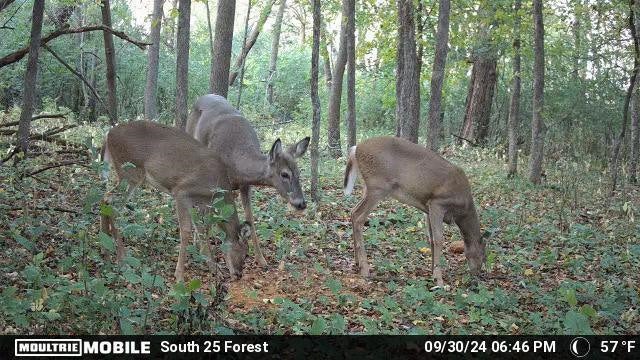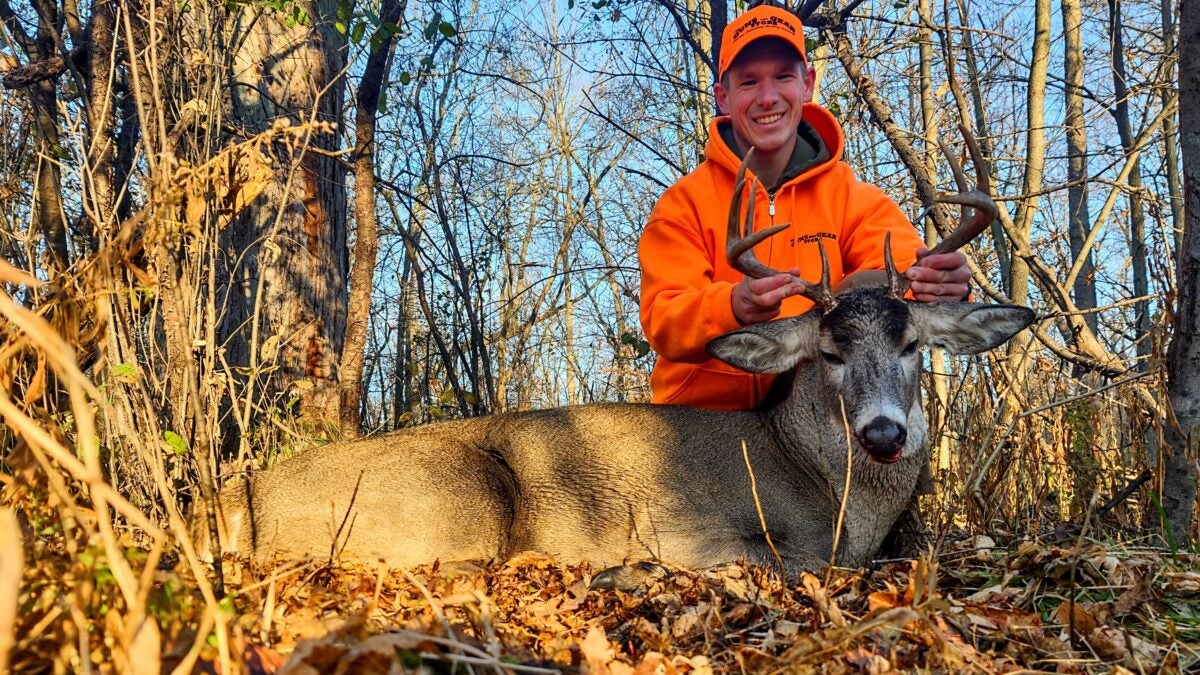
Let’s talk about what food do deer eat? Not just the basics you might find in a textbook, but the real-world feeding patterns that matter to hunters and land managers. You might think deer just munch on whatever green stuff they find, but there’s a lot more to the story. These animals are surprisingly picky eaters, and their food preferences change dramatically throughout the year.
What Food Do Deer Eat – Basic Feeding Patterns
Here’s something that might surprise you: deer aren’t like cattle. While they’ll certainly graze on grass when it suits them, they’re primarily browsers. Think of them more as selective food critics than all-you-can-eat buffet enthusiasts. They’re constantly making choices about what to eat based on what’s available and what their bodies need.
The way deer digest their food is pretty fascinating too. They’ve got a four-chambered stomach (like cattle) full of bacteria that helps break down plant material. That’s why you can’t just expect deer to instantly switch to a new food source – their gut bacteria need time to adjust. It’s like changing your diet overnight; it takes some time for the system to adapt.


Species-Specific Behaviors
When we talk about deer feeding habits, we need to understand that different species have evolved to handle different environments. Let’s break down how some of our main deer species approach their meal planning:
Mule Deer: are the mountain dining experts. You’ll find them nibbling on sage and other high-desert plants that whitetails probably wouldn’t touch. They’re comfortable feeding out in the open and have figured out how to make the most of what many would consider a pretty rough habitat.


Blacktail Deer: They’re the Pacific Northwest specialists. These deer have mastered life in dense coastal forests, making meals out of everything from huckleberry to lichens. When timber companies clear-cut an area, blacktails are usually first in line at the new growth buffet.


Whitetail Deer: are basically the adaptable food opportunists of the deer world. Whether it’s agricultural crops or acorns, these deer can thrive almost anywhere. They’re especially good at finding those hidden pockets of food that other species might miss.


Coues Deer: think of them as the desert survival experts. They’ve mastered finding food in some pretty harsh country, specializing in mountain mahogany and other desert plants that most other deer species would pass right by.


Regional Differences Matter
The menu available to deer varies wildly depending on where you find them. A blacktail deer in Oregon’s coastal forests isn’t going to find the same dinner options as a Coues deer in Arizona’s mountain ranges. And while whitetails might be living their best life in agricultural areas, mule deer often stick to native vegetation even when there are crops nearby.


Take winter feeding patterns, for instance. Mule deer up in the mountains have figured out how to paw through deep snow to reach food that whitetails might never even try to access. Meanwhile, down in the desert, Coues deer are dealing with a completely different challenge – finding plants with enough moisture to meet their needs.
Seasonal Patterns
Let’s walk through how deer adapt their dining habits throughout the year. It’s pretty amazing how their preferences shift with the seasons.
Note: Weather conditions significantly impact feeding patterns across all seasons. Even within the same region and species, local habitat variations can create distinct feeding patterns and movement schedules.
Spring
Spring brings rapid change to deer diet, with timing varying significantly by species and location. As new growth emerges:
- Mule deer often move to higher elevations, following the green-up
- Whitetails quickly shift to new agricultural growth where available
- Blacktails take advantage of fresh forest understory growth
- Coues deer capitalize on early monsoon vegetation
- All species seek out protein-rich new grass growth
- Dietary focus shifts to high protein foods supporting antler growth and fawn development
Common spring food sources include:
- Fresh clover growth
- New grass shoots
- New agricultural plantings
- Tender tree buds
- Early emerging forbs
Summer
Summer feeding patterns focus on maintaining nutrition while managing heat:
- Mule deer often feed at higher elevations where vegetation remains greener
- Whitetails typically feed heavily in agricultural areas during early morning and late evening
- Blacktails utilize dense forest cover, feeding throughout the day in coastal regions
- Coues deer become primarily crepuscular, focusing on plants near water sources
- Most species increase water source visits during hot weather
- Many deer shift to more nocturnal feeding patterns during extreme heat
Common summer foods include:
- Agricultural crops where available
- Soft mast (berries, fruits)
- Leaves from preferred food species
- Various forbs and weeds
Fall
Fall brings critical behavioral changes as deer prepare for winter:
- Mule deer begin moving to winter ranges
- Whitetails focus heavily on acorns and agricultural crops
- Blacktails shift to higher protein plants before winter
- Coues deer take advantage of late monsoon growth
- All species increase feeding activity to build fat reserves
- Feeding patterns intensify during pre-rut and rut periods
Common fall food sources include:
- Hard mast (various nuts and acorns)
- Standing agricultural crops
- Remaining soft mast
- Woody plants
Winter
Winter feeding varies dramatically by region and elevation:
- Mule deer typically winter at lower elevations, browsing on sage and bitter brush
- Whitetails concentrate on woody plants and remaining agricultural waste
- Blacktails continue utilizing evergreen plants in coastal areas
- Coues deer maintain relatively consistent patterns in their mild winter range
- Northern deer may enter semi-hibernation states during severe weather
- Many species yard up in areas with dense conifer cover for protection and plantlife
Common winter foods include:
- Cedar and pine plantlife in harsh conditions
- Leftover agricultural waste where available
- Woody plants
- Winter wheat or rye in agricultural areas
Preferred Foods When Available
While deer will eat hundreds of different plant species, they show strong preferences when given choices. Some consistently favored foods include:
- Hard Mast: Including various oak species and other nut-producing trees
- Agricultural Crops: Particularly during early growth stages
- Tender platlife: Including blackberry and other brambles
- Food Plot Plants: Especially legumes and brassicas when available
- Native Forbs: Various flowering plants and weeds


Impact on Hunting and Land Management
Understanding deer food preferences affects both hunting strategy and habitat management. Identifying primary food sources helps predict deer movement patterns. For land managers, this knowledge guides:
- Food plot planning
- Tree and shrub selection for habitat improvement
- Timber management decisions
- Agricultural crop protection strategies
Supplemental Feeding Considerations
Here’s something that needs careful consideration: supplemental feeding isn’t as straightforward as putting out corn and calling it good. Regulations vary by location, and there are good reasons for this.


- Disease Prevention: Concentrated feeding areas create unnaturally close contact between deer, dramatically increasing the risk of disease transmission, particularly concerning for conditions like Chronic Wasting Disease (CWD).
- Natural Movement Pattern Preservation: Regular feeding can disrupt natural deer movement patterns, causing them to abandon traditional routes and creating unhealthy dependencies on artificial food sources.
- Hunting Ethics Considerations: Many states regulate or prohibit supplemental feeding due to fair chase principles and concerns about altering natural deer behavior during hunting seasons.
Understanding the Real Impact – What Food Do Deer Eat?
The key takeaway here is that deer feeding habits are both simple and complex. Simple because deer eat plants – period. Complex because which plants they eat, when they eat them, and why they choose certain foods over others changes constantly based on location, season, and availability. What works in one area might not work in another, even if you’re dealing with the same species of deer. The best approach is to learn what’s available in your area and how your local deer use these food sources throughout the year.


Want to better understand the deer in your area? Start by learning what natural food sources are available each season. Watch how these food sources get used – or sometimes ignored – as conditions change. This kind of observation builds the practical knowledge that makes for better hunting and land management decisions.
Have you noticed specific feeding patterns in your area? Understanding local variations helps build a more accurate picture of deer behavior. Share your observations in the comments below!
